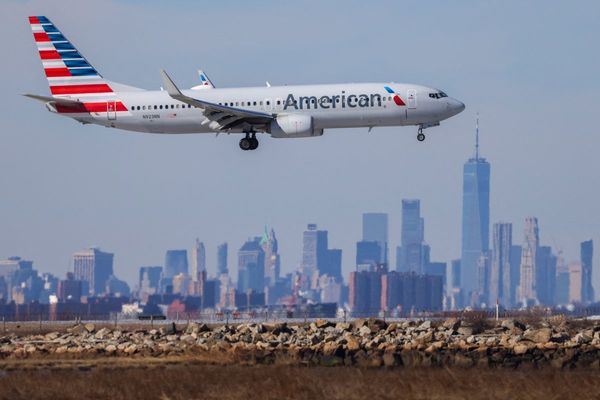Oyster harvesting is in Lorraine Woolley's blood.
The Butchulla woman's great grandfather and grandfather harvested oysters in the waters around Urungan and Burrum Heads in south-east Queensland.
"My grandfather would go down and eat the oysters off the rocks while us kids played," she remembers.
Warning: Indigenous people are advised there are images of middens in this story.
Lorraine's people harvested oysters well before her great grandfather arrived from Ireland in the 1870s.
There are many mounds of shells dotted all over her country, says Ms Woolley, who is the chairperson for the Butchulla Native Title Aboriginal Corporation in Hervey Bay.
But there are no longer any original oyster beds in the area.
Ms Woolley says the oysters disappeared because of disease and over-exploitation by European settlers, who took the oysters further south to Moreton Bay in the late 1800s.
"My great grandfather wrote a letter and asked them to stop doing it because he said they were robbing the banks," she said.
"[Oyster beds] are like vegetable gardens. You've got to replant a vegetable garden, and they just kept taking them out."
Post-colonial oyster bed collapse not just a local event
The collapse of oyster beds is a story familiar to Indigenous people in many coastal regions of Australia, as well as the US.
A new study, published today in the journal Nature Communications, looks at the scale of oyster harvesting before the arrival of Europeans in both countries to see what the modern industry could learn from Indigenous practices.
"There's a lot of talk about the collapse of oyster fisheries due to overfishing and all sorts of other problems during the 19th and 20th centuries, but [previous studies] don't go further than that," said the study's lead author Lesley Reeder-Myers, an anthropologist at Temple University.
But the new study of oyster mounds in south-east Queensland and several sites in the US indicates that Indigenous oyster fisheries were sustainably managed on a massive scale for up to thousands of years without widespread crashes.
"These fisheries … were sustainable for a really long time and it's not an isolated event," she said.
The study indicates that Indigenous knowledge of oyster harvesting practices could help restore the health of oyster beds today.
But that's not the most important finding, Dr Reeder-Myers said.
"It's about the fact that these people have been divided from their ecological heritage for hundreds of years in some cases, and that restoring them is a justice issue."
Ian McNiven, a professor of Indigenous Archaeology at Monash University, was one of the study's co-authors and is well known for his work with Indigenous communities in south-east Queensland.
"In the past, a lot of people have thought that, 'it is nice to include Indigenous people but given that their levels of resource extraction [were] so low, of course it was sustainable, and it's not really helpful for the modern age'.
"But what we are saying is when you look at the archaeology, some of the levels of First Nations oyster exploitation [were] unbelievably extensive."
One of the oyster sites that Professor McNiven studied in Australia includes the Booral shell mound on Butchulla country.
The 1.5-metre-high mound has been dated up to 3,300 years and contains more than 5 million shells.
In parts of the US, such as Florida, some shell mounds are higher than 9 metres, Dr Reeder-Myers said.
"I've seen one of these towers and my jaw just dropped, I was blown away," she said.
"This isn't that different from fisheries after European arrival. These are on a huge scale."
Harvesting vs farming
Dr Reeder-Myers said that it was unclear from the study whether or not oysters were intentionally farmed in the way we know it today.
"They were very aware of how their ecosystem worked … but to what extent they were building intentional structures or doing something we would call aquaculture, we don't know with this dataset," she said.
Finding out whether Indigenous people harnessed the intertidal area in the same way they used fire to shape the land and fish traps on inland streams was the next step in research, Professor McNiven said.
He said there was evidence some groups may have farmed oysters.
"The Quandamooka people of Moreton Bay have very strong oral histories where they would get the oysters that were collected and instead of putting the shells into the middens, they would take a lot of the shells back out onto sandbanks and create, in a sense, artificial reefs for the oyster larvae or spat to grow," Professor McNiven said.
"There is a possibility that the extraordinary level of extraction of commercial oyster fisheries in the late 19th century may have been living off thousands of years of Indigenous farming of oysters.
Restoring cultural connections to oyster harvesting
Further south, Mitch Gibbs, a marine biologist and Dunghutti man, is working with three Indigenous land councils and the NSW government to restore cultural connections to the oyster beds in the Sydney region.
"In Australia, we've lost about more than 99 per cent of our Sydney rock oyster reefs and we've lost more than 92 per cent of our flat oyster or mud oyster reefs," said Dr Gibbs of the University of Sydney.
"Unfortunately there's been a huge decimation of our reefs since colonisation."
Many reefs were crushed to make concrete and lime.
Dr Gibbs welcomed the findings of the new paper.
While it's still early days for his work, he said people were becoming more open about working with Indigenous people to improve the management of oyster reefs.
"In places where I've worked, there are Aboriginal elders within those environments and countries, and the information they have is astronomical."
Dr Gibbs said knowledge of different ecological systems varied from country to country.
But beyond ecological value, he said it was also important to understand that many shell sites have spiritual and cultural significance.
"Shells were really important and used for a huge variety of things," he said.
"Specific middens can be more spiritual than others based on people buried there, or based on the uses over time."
Back on Butchulla Country, Lorraine Woolley hopes the modern oyster industry can learn something from Indigenous people.
But she is unsure about how much Indigenous knowledge is left in her area.







